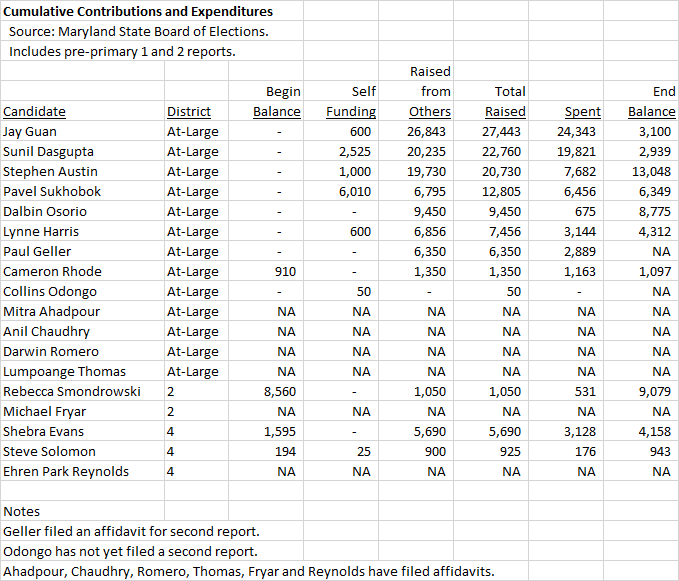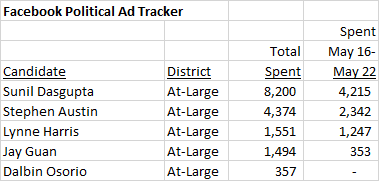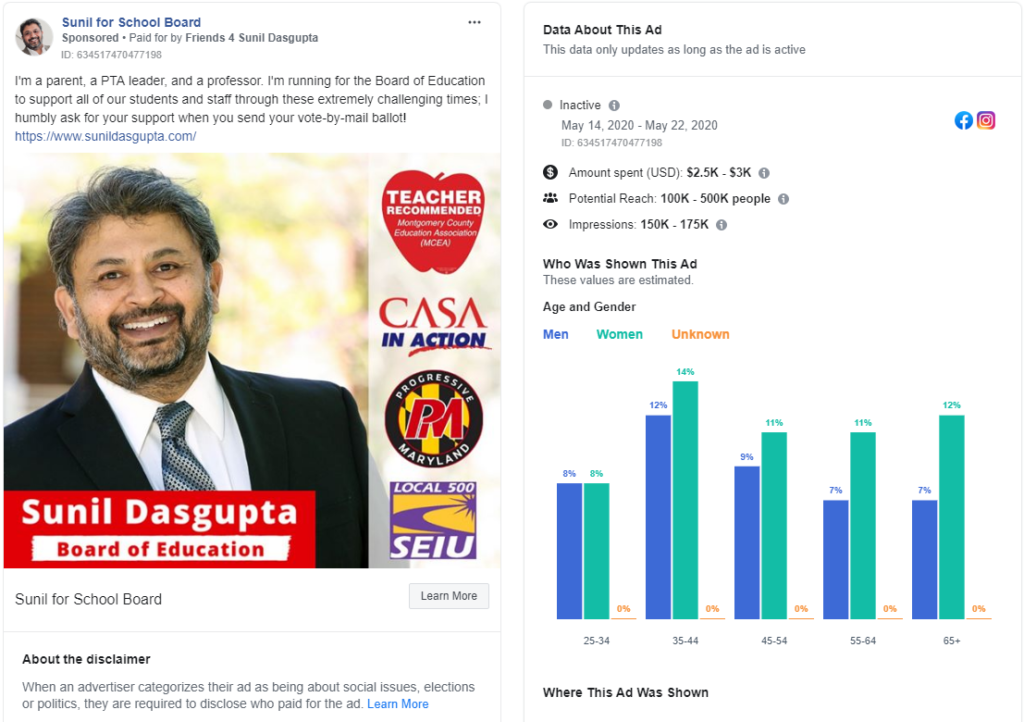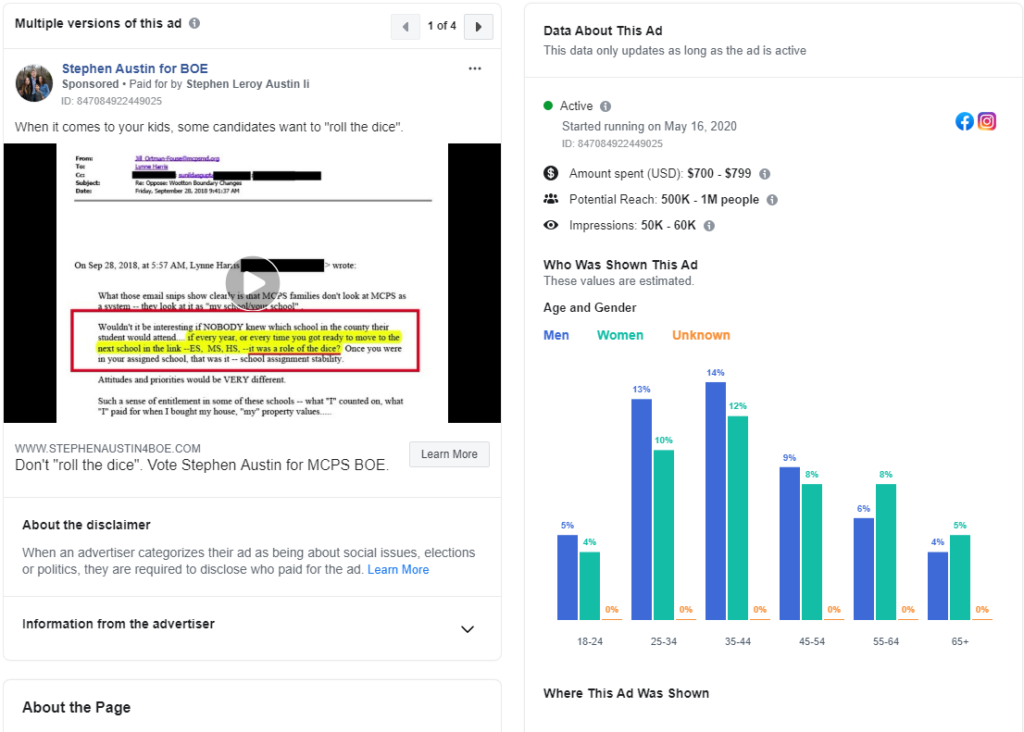By Adam Pagnucco.
Recently, I posted totals raised and spent by candidates for school board in the primary. Today, let’s look at the geography of contributions in the at-large race.
The at-large race, easily the most contentious MoCo school board contest since the early 1980s, has many overtones of race and class owing to its discussion of school boundaries. In MoCo, race and class are synonymous with geography. The county has huge differences in race, language and economics between its various subdivisions. Indeed, most of the county’s wealth is concentrated in a handful of zip codes. The county has noticeable racial segregation in its schools as well as significant inequity between them.
I broke down the geography for individual contributions to five candidates – Stephen Austin, Sunil Dasgupta, Jay Guan, Lynne Harris and Dalbin Osorio. (Pavel Sukhobok, the 4th-leading fundraiser, only has 7 contributors other than himself.) For each candidate, I tabulated the number of contributors and total contributed by individuals for each major local area in the county. These figures exclude self-funding, PACs, businesses and unions.
Two areas require definitions. The first is the Downcounty Crescent, the areas in and around the Beltway that play a disproportionate part in Democratic primary voting. The Crescent includes Bethesda, Cabin John, Glen Echo, Chevy Chase, Kensington, Takoma Park and the Silver Spring zip codes of 20901 and 20910. This area trends left – with some places going far left – and is largely responsible for sending Jamie Raskin to Congress. The second is Upcounty, which I define as including Ashton, Barnesville, Boyds, Brookeville, Clarksburg, Damascus, Dickerson, Gaithersburg, Germantown, Laytonsville, Montgomery Village, Olney, Poolesville, Sandy Spring and Spencerville. This area contains a greater proportion of moderate Democrats, Republicans and unaffiliated voters than other parts of the county.
Now let’s look at the candidates.
Stephen Austin
Almost two-thirds of Austin’s contributors and 75% of his individual funding comes from Bethesda, Potomac and North Potomac. These areas are home to some of the highest-performing high school clusters in the county. Austin is a leading critic of MCPS’s recent school boundary analysis. It makes sense that parents in these areas would be skeptical of having their kids sent to other schools.
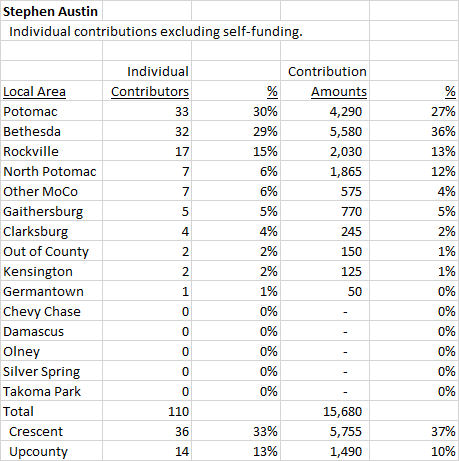
Sunil Dasgupta
Silver Spring, the county’s largest geographic unit, accounts for 28% of Dasgupta’s contributors and 31% of his individual fundraising. The rest of his contributions are well dispersed.
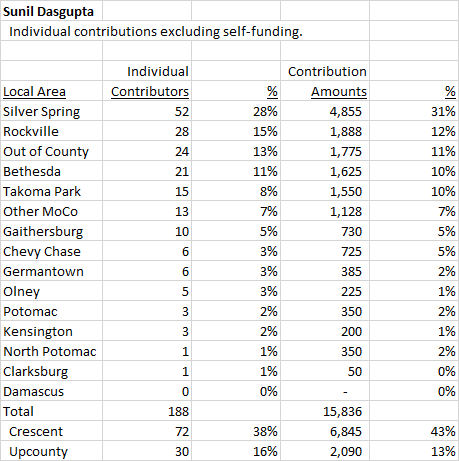
Jay Guan
The vast majority of Guan’s contributors are east Asian so it makes sense that his geography would match the most heavily Asian high school clusters in the county (like Wootton, Churchill, Richard Montgomery and Clarksburg). Guan lives in Clarksburg so it’s no surprise that he is the runaway fundraising leader there.
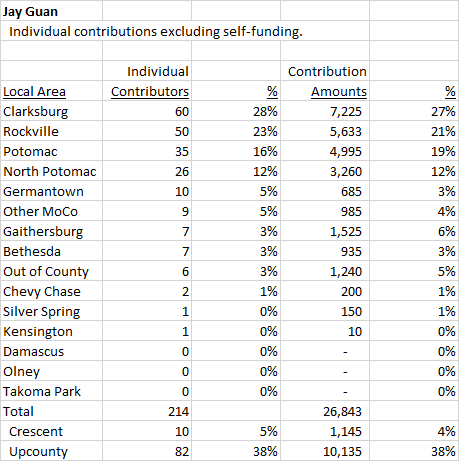
Lynne Harris
Silver Spring is Harris’s biggest source of campaign funds – by far.
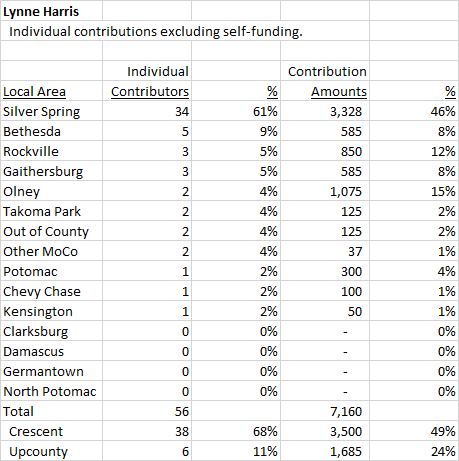
Dalbin Osorio
A huge majority of Osorio’s fundraising is coming from outside the county, with most of that coming from out of state.
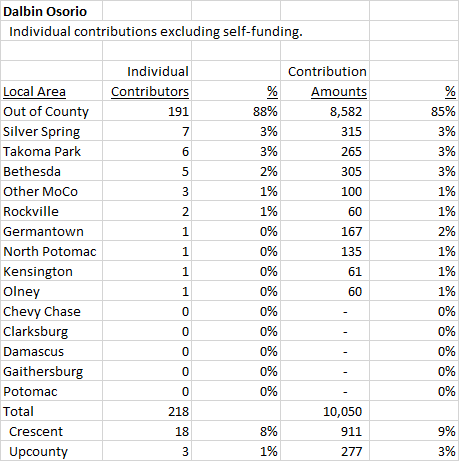
Here is a summary of fundraising from four key areas in this race.

And so the contribution geography reveals the appeal of each of these candidates, at least in terms of fundraising. Austin has raised the most from Bethesda and has split Potomac with Guan. Guan has raised the most from east Asians, Rockville and Upcounty. Silver Spring and Takoma Park are going with Dasgupta and (to a lesser extent) Harris, although Dasgupta has the most geographic diversity of any candidate. Osorio needs to find more contributors who live in MoCo.
It’s a shame that the State Board of Elections won’t be releasing precinct-level data in the primary because then we could see if votes follow money. Let’s hope that we can get precinct results in the general election.

